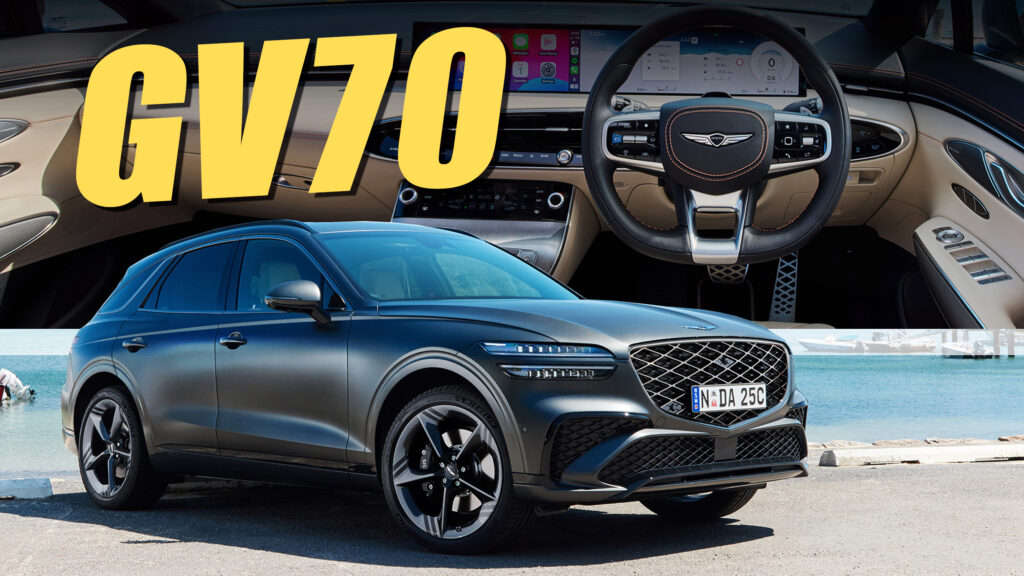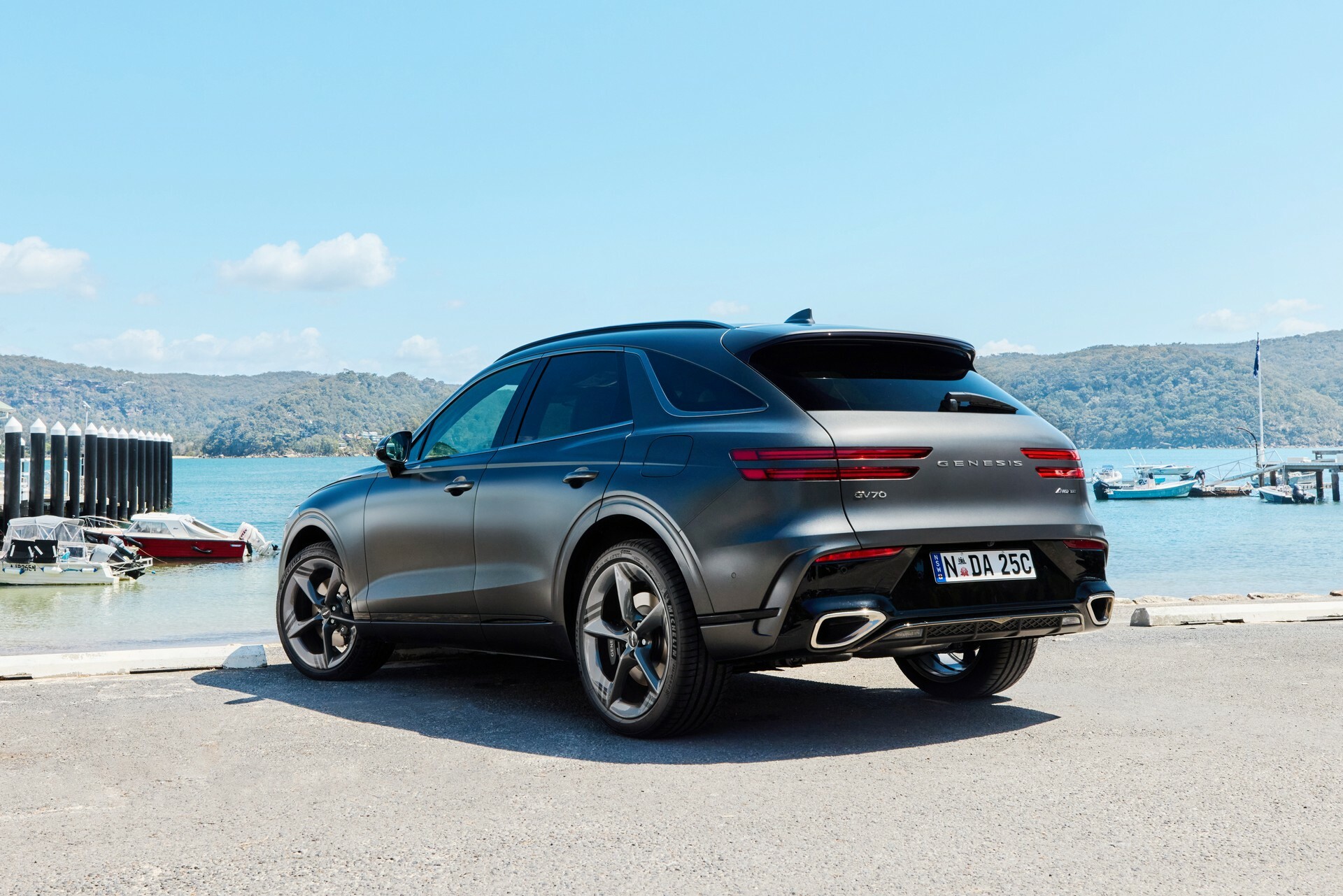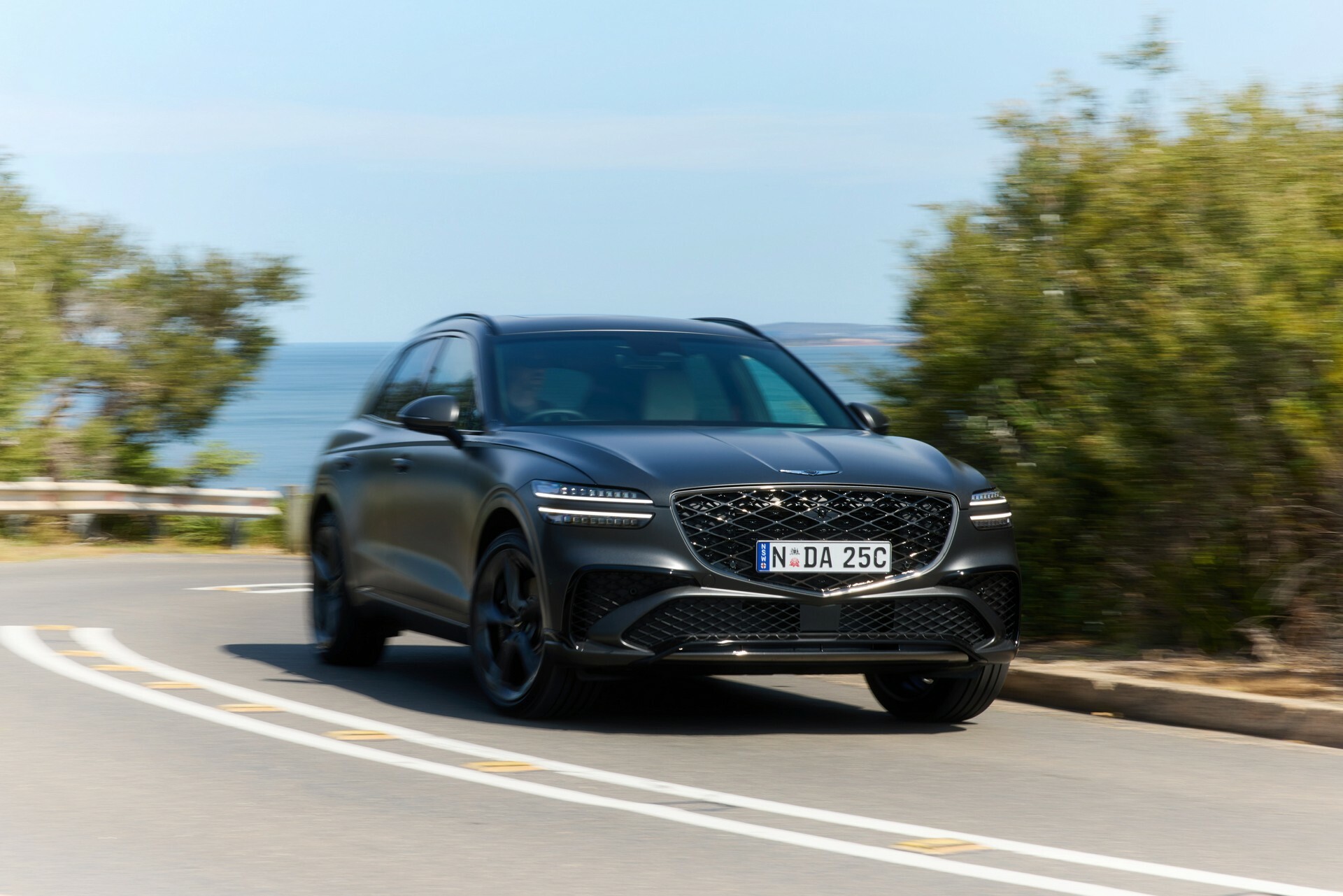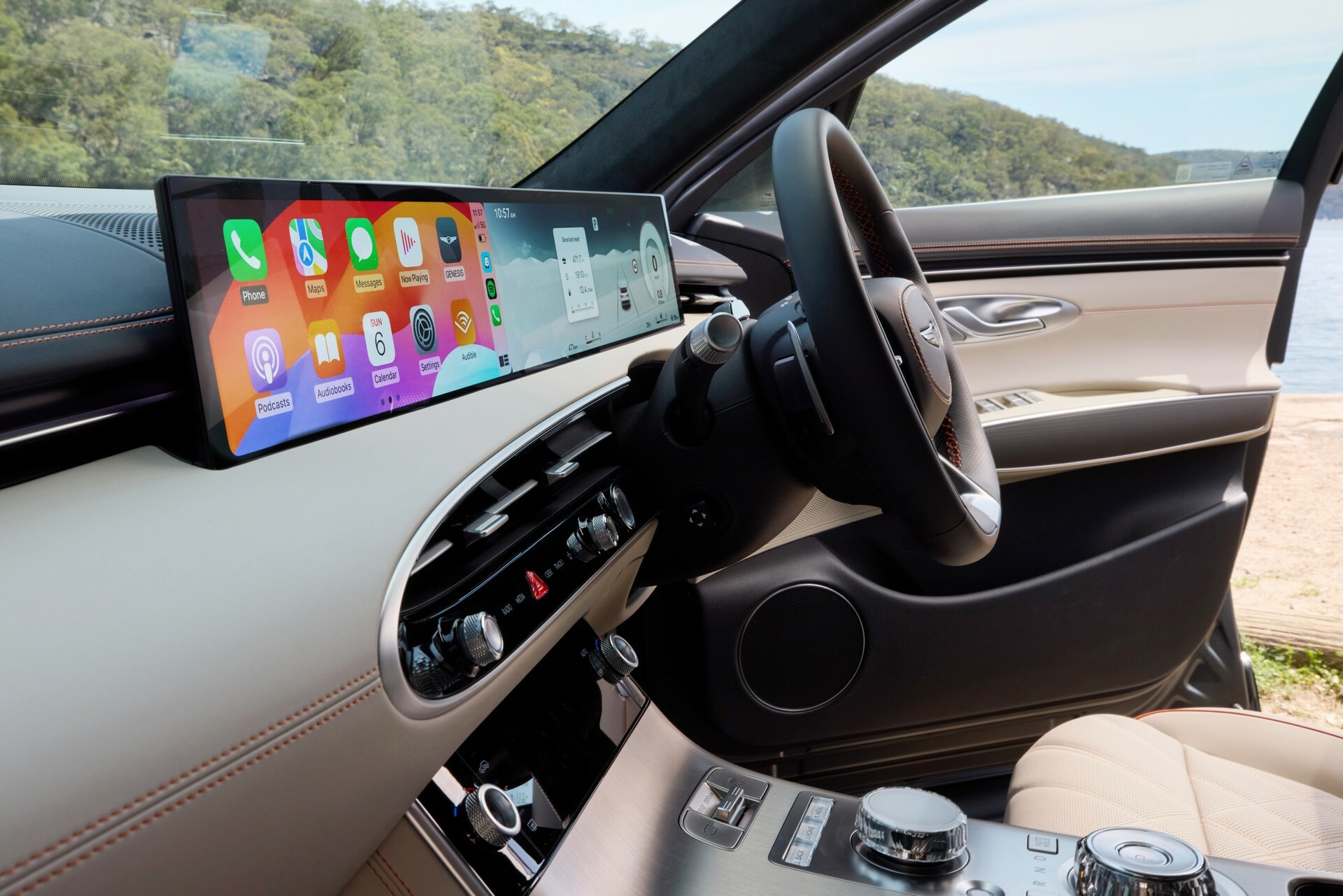Often, car manufacturers tack on a shiny new grille, tweak the lights, and call it a facelift, all while trying to convince us that it’s a revolution rather than a reheated leftovers special. Underneath, of course, the car is usually as familiar as yesterday’s news. The 2025 Genesis GV70, however, is a little different.
You see, the luxury brand of the Hyundai Motor Group has made a series of significant improvements to its best-selling SUV, which doesn’t just make it better than the pre-facelifted model but also propel it to a level that even the Germans will have a hard time competing with. So, what exactly makes the updated GV70 stand out, and does it have the chops to unsettle the old guard?
To find out, we packed our bags, headed to Australia’s sun-drenched Gold Coast and the bohemian retreat of Byron Bay, and slid into the driver’s seat to see if the GV70 can walk the talk—or if it’s simply another facelift that overpromises and underdelivers.
Quick facts
Visually, you’d be hard-pressed to tell the difference between the 2025 GV70 and the model it replaces. It retains the same overall shape as the GV70 that Genesis has been selling for a few years now. Look a little closer and some of the differences become more obvious.
For example, the narrow headlights have been updated with new LED modules, making them that much more effective. The brand’s designers have also altered the front grille, giving it a slightly more refined look. Like most other facelifts of this sort, changes have also been made to the front and rear bumpers, but these are a little harder to spot.
It’s the updates going on under the skin that intrigue us the most. Engineers from Genesis have strengthened the body in white and also improved the damping of the transmission and steering wheel. The revisions don’t stop there. All 2025 GV70 models come standard with revised springs and stabilizer bars, as well as newly designed bushes in the control arms and rear cross member. According to the Koreans, this reduces impact harshness and improves comfort for rear occupants.
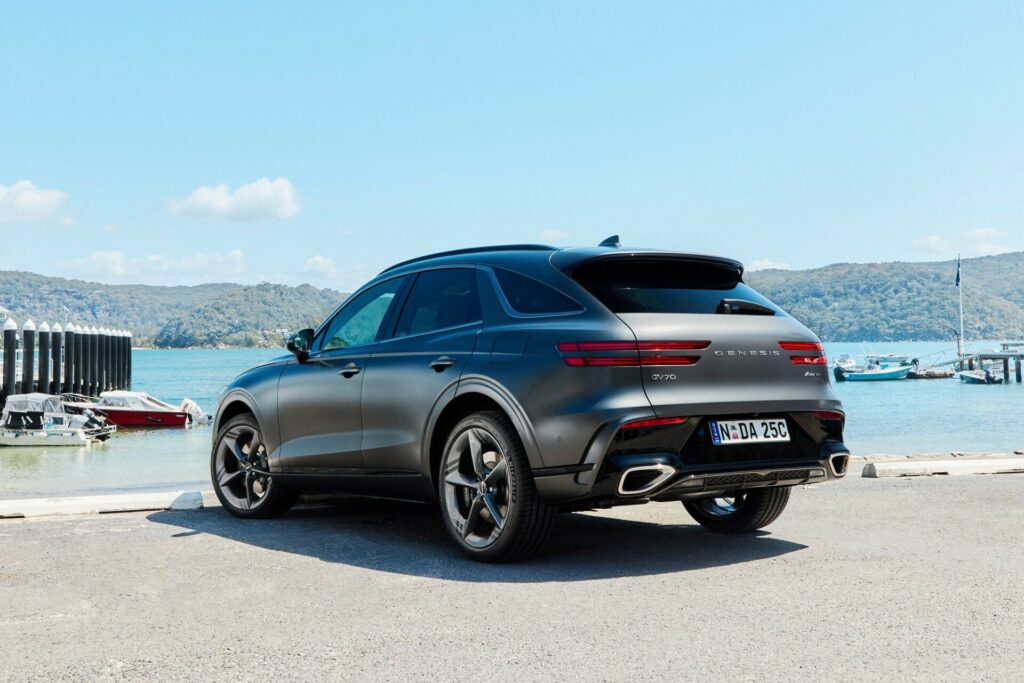
Work has also been done to make the GV70 more serene than ever, and includes new sound-absorbing material on the side sills, carpets, and even the rear wheel guards. Other pieces of insulation have been added to reduce noise. An Active Noise Control function has also been added, which works in the same way as a set of ANC-equipped headphones, eliminating road noise with out-of-phase sound waves. New double-laminated soundproof glass is also standard across the range.
Genesis has also overhauled the trim levels and GV70 variants that it offers in Australia.
For starters, the 2.2-liter turbo-diesel that had previously been available is gone, leaving behind the familiar 2.5-liter turbocharged four-cylinder and the 3.5-liter twin-turbocharged V6. The base four-cylinder packs 224 kW (300 hp) at 5,800 rpm and 422 Nm (311 lb-ft) of torque between 1,650 and 4,000 rpm, while the 3.5-liter turbo is rated at 279 kW (374 hp) at 5,800 rpm and 530 Nm (391 lb-ft) between 1,300 rpm and 4,500 rpm. Both models use an eight-speed automatic transmission and the 3.5-liter adds an electronic limited-slip differential.
Three trims are available. The entry-level model is known as the Advanced and is offered exclusively with the 2.5-liter, priced from AU$78,500 (~US$51,600). Sitting in the middle of the range is the Signature, which can be ordered for AU$87,500 (~US$57,500) with the 2.5-liter or the 3.5-liter from AU$98,000 (~US$64,400). It adds a slew of extra equipment, including a 16-speaker Bang & Olufsen sound system, interior mood lighting, a UV-C sanitizing console, and an air-aroma diffuser. Perhaps the most important added feature is High Body-Motion Control and Premium ECS, which uses the SUV’s cameras and radar to pre-emptively adjust the suspension.
The flagship model is known as the Signature Sport, and it too is sold in 2.5-liter and 3.5-liter guises with prices starting at AU$89,500 (~US$58,800) for the 2.5 and AU$100,000 (~US$65,700) for the 3.5. It has most of the same features as the Signature but has exclusive 21-inch wheels, unique exterior and interior styling, and alloy pedals.
Five interior color configurations are offered for the Advanced and Signature, while the Signature Sport is offered in four interior colors, three of which feature bright orange accents. Twelve exterior finishes are available, including four matte options, across the range.
Korean style
The pièce de résistance of the updated GV70 is the cabin. It is wonderful.
When I first drove the GV70 back in 2021, I was impressed by the interior. It was bathed in premium material and felt far more luxurious than the SUV’s price tag suggested. This new model is even better.
The highlight of the new interior is the screen. Genesis has ditched the 12.3-inch digital instrument cluster and 14.5-inch infotainment display of the old model and replaced it with a single 27-inch screen. Expansive displays like this are becoming increasingly commonplace across the industry, and while we don’t always like them, the Genesis screen is lovely. It’s incredibly crisp, and the narrow bezels make it feel premium.
Perhaps my only critique of the display is the fact that it’s completely flat rather than curved. That’s a shame because screens from brands such as BMW, Hyundai, and Kia are curved. This is handy as it helps tilt the infotainment display slightly towards the driver. In the GV70, the far edge of the screen feels like it curves away because of the angle.
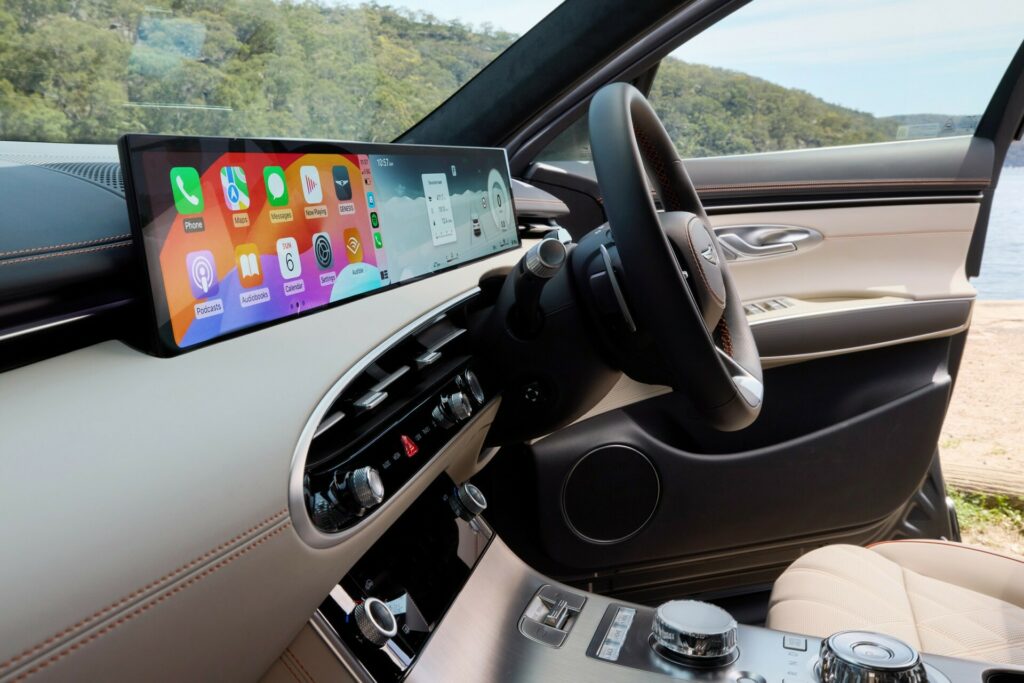
Several other updates have been made. There are two different steering wheels on offer, depending on the model. Genesis has also moved the touch-sensitive HVAC controls from the elliptical piece on the dashboard to an area lower down on the console. Sitting in the place of the old controls are air vents. Alterations have also been made to the transmission tunnel, and the wireless phone charger has been relocated behind the shifter.
Read: 2023 Genesis Electrified GV70 Is Brilliant But Is It Worth The Premium?
Sitting behind the wheel of the GV70 is a joyous experience. Not only does it feel luxurious, but every curve and material is pleasing to the eye and – more importantly – to the touch. I was particularly fond of the silver finish across the transmission tunnel, as opposed to the piano black plastic that so many other carmakers continue to persist using.
The seats are supremely comfortable, and all models include heated and ventilated functions. The Signature and Signature Sport add an awesome massage function. Genesis hasn’t neglected those sitting in the rear either, as they, too, are treated to the finish materials imaginable, as well as plenty of room. This is an ideal premium offering for families with one or two kids. For bigger families, it would be wise to go with the larger GV80.
Genesis at its best
The Genesis GV70 has always been nice to drive, and the 2025 model is even better than before. Heading into my experience with the new model, I’d wondered how it could possibly be improved, but Genesis has done it.
The first version I drove was the base GV70 Advanced. It may sit at the base of the range, but it does not feel at all like an entry-level model. The 2.5-liter turbocharged four-cylinder packs an impressive punch and gets you up to speed nicely and quickly. It’s also exceptionally quiet and doesn’t intrude on the driving experience. For the vast majority of buyers, it ticks all the boxes.
It’s clear that Genesis has prioritized comfort with this model, even though it does respond quite nicely when pushed along a winding mountain road. There’s plenty of grip, and the brakes are more than up to the task of bringing it to a stop. However, this isn’t a model that encourages you to push it to its limits and excels when driving gently, making it feel like you’re wafting around on a cloud of Korean comfort.
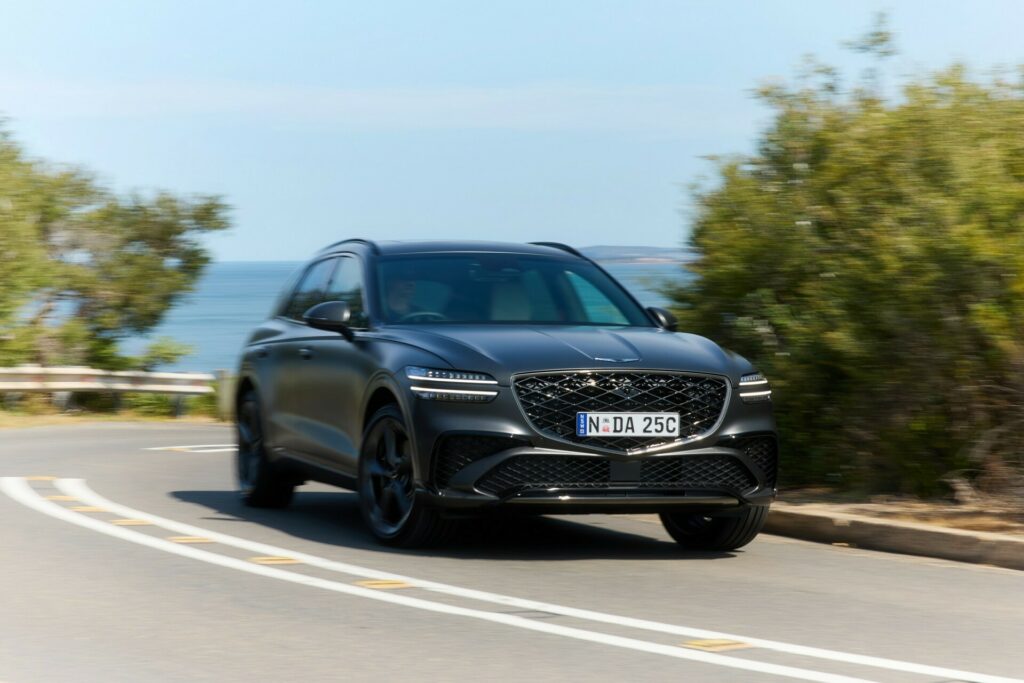
I also had the opportunity to drive the GV70 Signature Sport with the 3.5-liter twin-turbocharged V6. Thanks to the extra horsepower and torque, it feels significantly sprightlier than the smaller engine. The biggest difference is the low-end torque, giving it much more pulling power. With that being said, the GV70 doesn’t offer quite the same ferocious punch and instantaneous response as the smaller G70 sedan, even though it’s equipped with the older 3.3-liter twin-turbo V6.
As I mentioned, the 3.5-liter models also come with an electronic limited-slip differential. Most owners will never push their GV70 hard enough to notice the LSD, but I did, and you can definitely feel it working, making the SUV all the more enjoyable to drive and hustle through corners. What’s particularly impressive is just how ludicrously comfortable the GV70 remains at all speeds and under all driving scenarios. Nothing can upset it, no matter how bad the road surface may be or how stupidly you may drive it. All 2025 GV70 variants come standard with all-wheel drive, adding to their versatility.
Verdict
The Genesis GV70 has always been the brand’s most legitimate rival to the European brands, and it’s now better than ever. With competitive pricing and a bucketload of impressive features, it should be at the top of the list for anyone in the market for a premium SUV. However, it’s worth noting that prices have increased significantly for 2025. Prices for the base model have jumped from AU$70,500 (~$45,500) to AU$78,500 (~$51,600), and the flagship 3.5 tops out at AU$100,000 (~$65,700), whereas it had once cost AU$85,100 (~$55,000).



